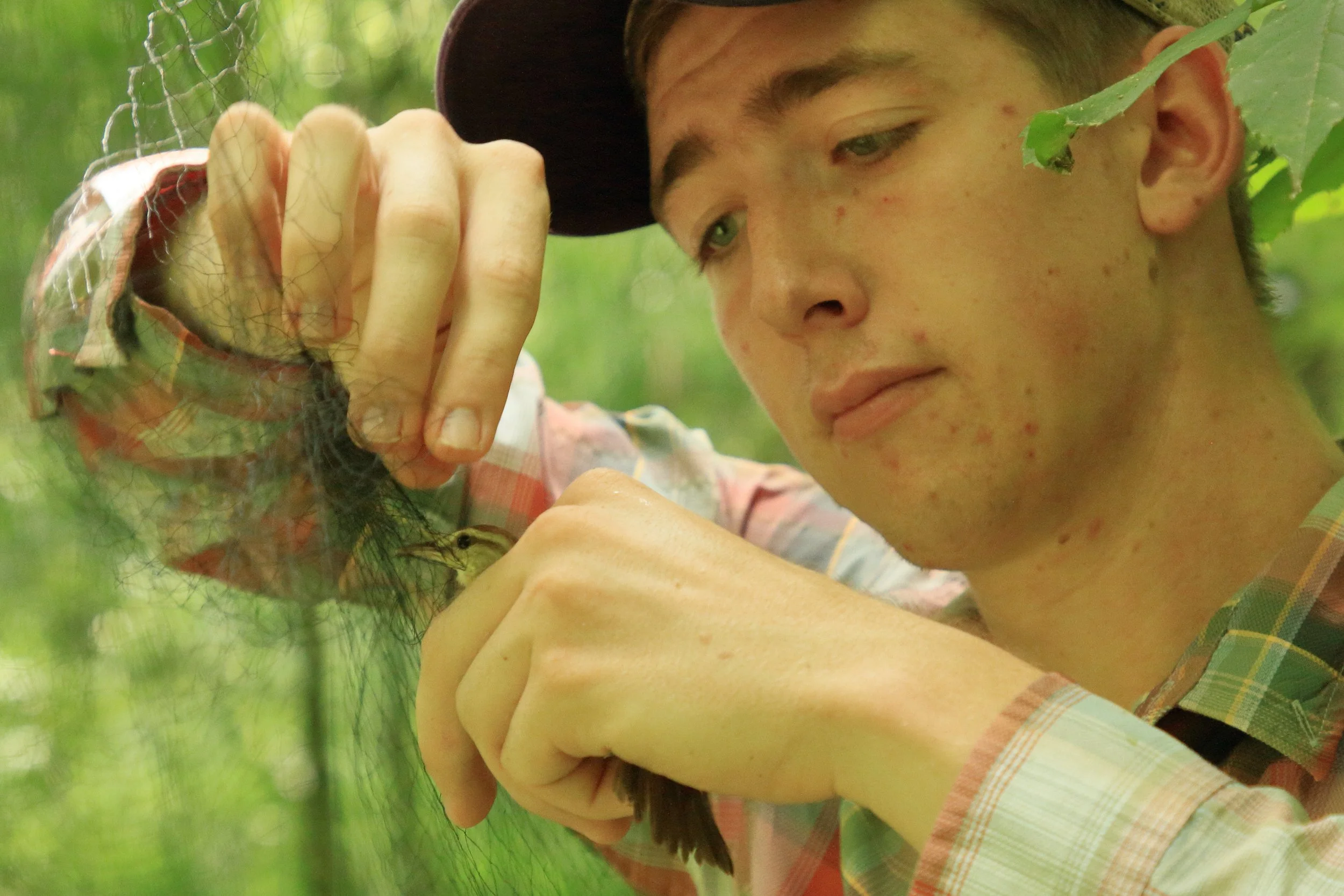A Tiny Bird’s Hidden Journey—And How Breaks Helped Uncover It
By Dr. Ashley Peele
🌿 If you've ever hiked through Breaks Interstate Park and found yourself tangled in thick rhododendron tunnels, you’ve experienced the Appalachian “Rhododendron Hells.” These dense, dark thickets—wet and wild—aren’t the easiest to navigate, which is probably why so few people do. But sometimes, it’s exactly in those hard-to-reach places that nature hides its greatest secrets.
That’s what researchers from Virginia Tech and Louisiana State University found out in 2021 and 2022 when they came to Breaks in search of one of the most elusive birds in the southern Appalachians: the Swainson’s Warbler.
Small, brown, and sneaky, Swainson’s Warblers don’t soar through the canopy. Instead, they forage close to the forest floor, flipping leaves with their long bills to find spiders and insects. They’re shy. They’re quiet. And they’re masters of camouflage. Spotting one? That’s a lifetime achievement for many birdwatchers.
But it’s not just the warbler’s secretive nature that intrigued researchers—it’s the mystery of where it goes when it leaves the Appalachians in late summer. For years, scientists knew where these birds nested, but not where they spent the winter. How do you protect a species when half its life is a blank page?
That mystery pulled graduate student Garrett Rhyne into the story, alongside researcher Dr. Ashley Peele and field tech Hannah Wait.
With mist nets, patience, and a lot of rhododendron-crawling, they managed to capture and tag ten male warblers right here at Breaks with new micro-sized barometric geolocators—cutting-edge devices small enough for a bird that weighs only 15 grams.
But here’s the catch: to get the migration data, you’ve got to recapture that same bird after it’s migrated south, survived the winter, and returned the next spring. It’s like sending a message in a bottle and hoping it floats all the way back upstream.
Against the odds, they recovered seven of those tags—a remarkable success rate.
And what they discovered was nothing short of amazing: the Swainson’s Warblers had traveled through Florida, stopped in the Okefenokee Swamp, and spent their winters in the montane forests of Cuba before making the return trip north in April.
These findings were published in 2024 and marked a major milestone in bird migration research. For the first time, we have detailed knowledge of the Swainson’s Warbler’s full migration route. That’s huge—for science, for conservation, and for the Breaks.
Thanks to this research, Breaks Interstate Park is now part of an international conservation story—one that connects the southern Appalachian Mountains to the forests of Cuba. The very same bird that sings in our rhododendron hillsides each spring also sings in the highlands of the Caribbean.
It’s a beautiful reminder that nature knows no borders. And here at Breaks, we’re honored to help uncover the journeys that tie us all together.
Stay tuned for more discoveries from the park’s wildest corners—there’s always more to explore. 🌲🌳🌲
By Dr. Ashley Peele




